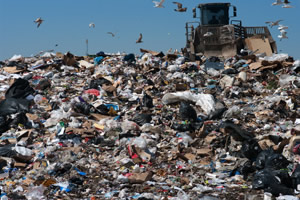
Environment
 You've seen the massive volume of waste that comes off the roof during each of your re-roofing projects. It is astounding.
You've seen the massive volume of waste that comes off the roof during each of your re-roofing projects. It is astounding.
Why bury all that material in the ground when it can be recycled instead?
The truth about landfills is that waste, once-dumped, compacted and buried, becomes entombed. It does not degrade or disappear over time. It just sits there. And if the landfill is old and/or poorly designed, the waste may partially degrade and allow contamination to leach into the ground polluting the surrounding environment and aquifers.
Recycling on the other hand ensures that the material is processed and put back to a higher use for years to come.
There are several environmental benefits due to recycling:
- Extended landfill life
- Reduced pollution associated with extraction of virgin materials, e.g. pulpwood
- Spared resources for future use
One of the principal reasons Americans recycle is because America's landfills are filling up at a rate of about 100 million tons per year and it is extremely hard to site new ones due to the "Not In My Backyard" (NIMBY) syndrome. Diverting trash from landfill disposal through recycling efforts does prolong the life of existing landfills and delay the need to open new ones.
One way of estimating the environmental benefits of recycling is to calculate the reduction in energy required to manufacture products using recycled feedstock compared to virgin feedstock. Since energy production has significant environmental impacts, reduction in energy needed translates into environmental benefits, including reduced pollution. A report from the Natural Resources Defense Council points out that since energy use causes a large part of the total environmental impact engendered by virgin material based-production, the lower energy use of production facilities employing recycled materials suggests that they emit fewer pollutants, including greenhouse gases.
According to NRDC, here are some of the reductions potentially available by using recycled materials to make things:
| Product | Reduction in Energy Needed |
| Aluminium | 94% |
| Plastic (3 grades) | 70-80% |
| Steel | 60% |
| Newsprint | 40% |
| Glass | 40% |
| Linerboard | 20% |
According to these figures, recycling plastics, i.e. foams and membranes, has significant environmental impact.
For all of these reasons, recycling your re-roofing debris makes environmental sense. Combined with the very real cost savings, recycling with Nationwide Foam adds up to a Win, Win!
 Indiana University, South East
Indiana University, South East